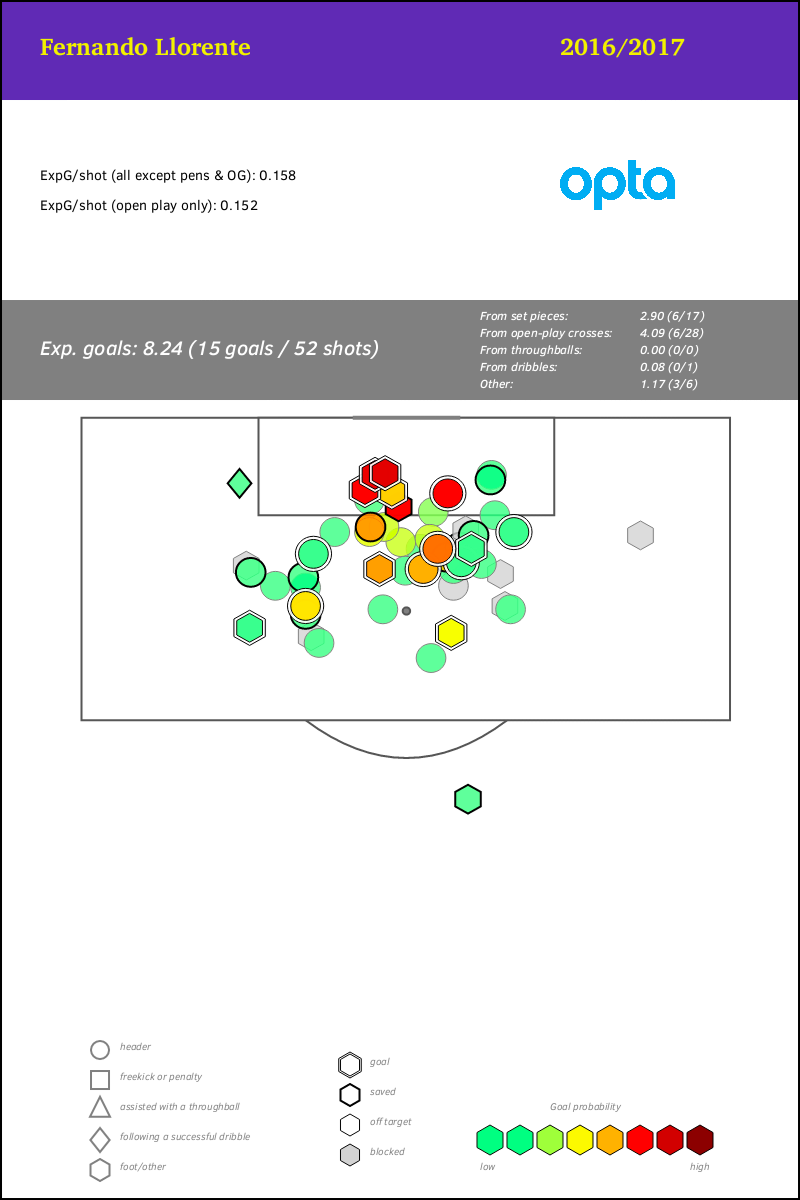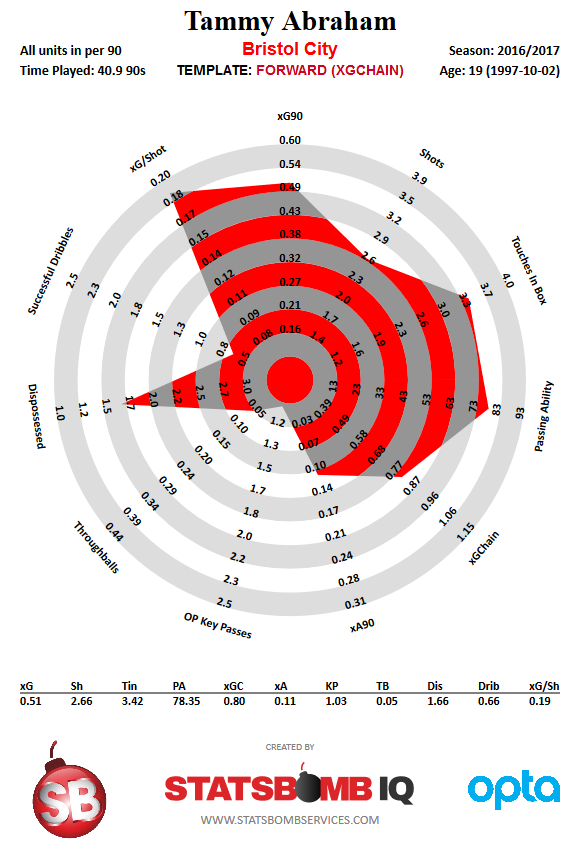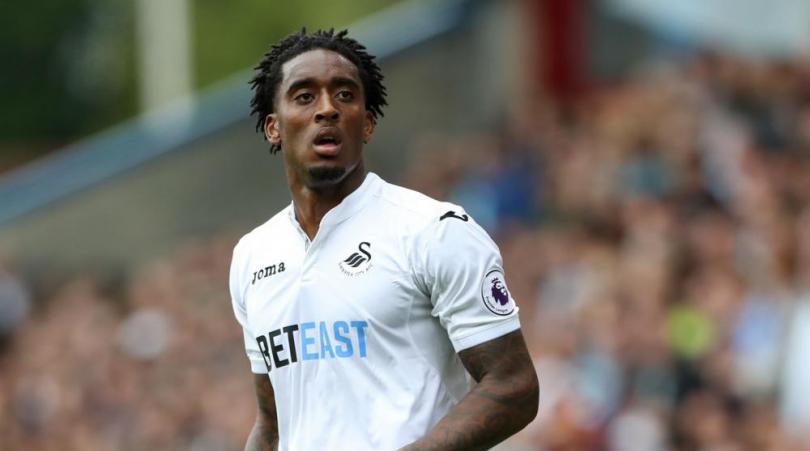Rue Swansea City. After five mostly stable years in the Premiership, in 2016-17 the wheels came off. Last season saw the club’s new owners ditching a competent manager for an untested one, a bold move which resulted in the club leaking goals left and right and sinking to the foot of the table. The club then hired their third manager in five months who righted the ship and managed to steer the Swans to safety for another year. Gauging the Gaffer Despite a thrilling trapdoor escape, few Swans fans will relish a repeat of the ups and downs of the previous season. Paul Clement, long a bridesmaid to the prolific Carlo Ancelotti and only once the bride himself with Derby County, appears skilled enough to steer the club safe from relegation. Aided by a raft of long-overdue signings in the 2017 winter transfer window, Clement lead the club to an xG difference over 0.5 points better than his predecessor Bob Bradley. His tightening of the defense came at the expense of attack, however, and Swansea’s xG of just over 1 per game remains worrisome. Fellow strugglers Middlesbrough demonstrated that even if a team keeps it tight at their own end, a neutered attack and too many nil-nil draws can bring relegation.  What can we make of Swansea City’s year of scattershot manager hires? The club traded in Francesco Guidolin, a defense-first manager who struggled under a difficult schedule, for Bradley’s reckless attacking swagger. When Bradley proved disastrous, the club traded in for Clement, a manager with limited head coaching experience who shifted the focus back to defense. There appears to be no effort to maintain continuity in tactical systems or style of play. Whereas the club was once heralded for playing a technical passing style, that approach has largely fallen away and has yet to be replaced with a coherent vision. Though Clement has been a success for his few months in charge, given his lack of prior head coach experience or internal work with the club that could be evaluated, one can’t help but think that his hiring was yet another shot in the dark. State of the squad Swansea’s positives in attack were a tale of two players: Gylfi Sigurdsson and Fernando Llorente. Despite an impressive return of 9 goals and 13 assists in 2016-17, a recent overview of Sigurdsson’s attacking numbers reveals his mastery of the dead ball, but otherwise output that is only lukewarm. Sigurdsson appears to be on his way to Everton, and given his limitations and age, the Swans will do well to sell him for the reported £50 million. Fans however, are right to wonder who will replace his goals and assists. Even if the club sign a marquee attacker who provides twice as many goals and assists from open play, they will still not match Sigurdsson’s output from last year. Then again, before last year, Sigurdsson had never before created more than two assists from set plays in a season, suggesting he may regress to more moderate creativity. Factor the Icelander’s age into the equation, and the time may be right to re-tool the heart of the Swansea’s attack. Swansea’s other star performer last season was the Lion King himself, Fernando Llorente. Despite being 32 and on the wrong side of the age curve, Llorente contributed 15 goals to the Swans’ survival last season. His xG of 8.24 is almost half of his actual output, and he is unlikely to overperform to the same extent next season. Of his 15 goals, six were from set pieces, all of which were delivered by the departing Sigurdsson. The man does provide a masterclass in where to shoot from, and fans can only hope that more trigger-happy teammates (hint: “the relegator”) are attending each lecture.
What can we make of Swansea City’s year of scattershot manager hires? The club traded in Francesco Guidolin, a defense-first manager who struggled under a difficult schedule, for Bradley’s reckless attacking swagger. When Bradley proved disastrous, the club traded in for Clement, a manager with limited head coaching experience who shifted the focus back to defense. There appears to be no effort to maintain continuity in tactical systems or style of play. Whereas the club was once heralded for playing a technical passing style, that approach has largely fallen away and has yet to be replaced with a coherent vision. Though Clement has been a success for his few months in charge, given his lack of prior head coach experience or internal work with the club that could be evaluated, one can’t help but think that his hiring was yet another shot in the dark. State of the squad Swansea’s positives in attack were a tale of two players: Gylfi Sigurdsson and Fernando Llorente. Despite an impressive return of 9 goals and 13 assists in 2016-17, a recent overview of Sigurdsson’s attacking numbers reveals his mastery of the dead ball, but otherwise output that is only lukewarm. Sigurdsson appears to be on his way to Everton, and given his limitations and age, the Swans will do well to sell him for the reported £50 million. Fans however, are right to wonder who will replace his goals and assists. Even if the club sign a marquee attacker who provides twice as many goals and assists from open play, they will still not match Sigurdsson’s output from last year. Then again, before last year, Sigurdsson had never before created more than two assists from set plays in a season, suggesting he may regress to more moderate creativity. Factor the Icelander’s age into the equation, and the time may be right to re-tool the heart of the Swansea’s attack. Swansea’s other star performer last season was the Lion King himself, Fernando Llorente. Despite being 32 and on the wrong side of the age curve, Llorente contributed 15 goals to the Swans’ survival last season. His xG of 8.24 is almost half of his actual output, and he is unlikely to overperform to the same extent next season. Of his 15 goals, six were from set pieces, all of which were delivered by the departing Sigurdsson. The man does provide a masterclass in where to shoot from, and fans can only hope that more trigger-happy teammates (hint: “the relegator”) are attending each lecture.  The club’s reliance on Llorente’s and Sigurdsson’s set piece act was necessary due to Swansea’s lack of creativity in open play. The team’s key pass leader in 2016-17 was Modou Barrow, who is now plying his trade in the Championship with Reading. Swansea’s next most common creator was an aging Wayne Routledge, while in 5th was Borja Bastón who mainly played substitute minutes. Arguably, the mercurial Jefferson Montero remains the best creator in the squad, though injuries and managerial disfavour means he rarely earns a starting place. Lack of chance creation seems the most obvious flaw Swansea need to address, and recruitment should prioritize targets accordingly.
The club’s reliance on Llorente’s and Sigurdsson’s set piece act was necessary due to Swansea’s lack of creativity in open play. The team’s key pass leader in 2016-17 was Modou Barrow, who is now plying his trade in the Championship with Reading. Swansea’s next most common creator was an aging Wayne Routledge, while in 5th was Borja Bastón who mainly played substitute minutes. Arguably, the mercurial Jefferson Montero remains the best creator in the squad, though injuries and managerial disfavour means he rarely earns a starting place. Lack of chance creation seems the most obvious flaw Swansea need to address, and recruitment should prioritize targets accordingly.  As is often the case, Swansea’s defense proves more difficult to evaluate than the attack. The task is made no easier given the back line’s relative success (or lack of) under various tactical systems last term. Paul Clement stemmed the tide of goals conceded after the Bradley experiment, but he did so by tightening the defense at the expense of attack. Questions remain about whether the personnel are good enough for Clement to loosen the tactics and allow more players to contribute going forward. Martin Olsson at left back seems a decent, if underwhelming replacement for Neil Taylor, who has looked out of his depth in the PL since a serious knee injury. Meanwhile, young Alfie Mawson has established his place in central defense, and played well under Clement’s system. The Cult of the New Who have Swansea recruited to address their issues in attack and chance creation? The club achieved something of a coup in securing Chelsea loanee Tammy Abraham. Not even 20 years old and already a ball of kinetic pace, guile and poacher’s instinct, with height and a strong build to match. Abraham absolutely crushed his debut season of professional football, netting 26 goals for a lackluster Bristol City side. With the potential to be a genuinely exciting player, the England U21 international could become the goal threat that Sigurdsson wasn’t, though he won’t fix the team’s issues with chance creation. Abraham remains young and has no substantive experience in a top league, and represents something of a gamble on that front. However, he is a low-cost signing with a high potential upside if he continues his form from last year.
As is often the case, Swansea’s defense proves more difficult to evaluate than the attack. The task is made no easier given the back line’s relative success (or lack of) under various tactical systems last term. Paul Clement stemmed the tide of goals conceded after the Bradley experiment, but he did so by tightening the defense at the expense of attack. Questions remain about whether the personnel are good enough for Clement to loosen the tactics and allow more players to contribute going forward. Martin Olsson at left back seems a decent, if underwhelming replacement for Neil Taylor, who has looked out of his depth in the PL since a serious knee injury. Meanwhile, young Alfie Mawson has established his place in central defense, and played well under Clement’s system. The Cult of the New Who have Swansea recruited to address their issues in attack and chance creation? The club achieved something of a coup in securing Chelsea loanee Tammy Abraham. Not even 20 years old and already a ball of kinetic pace, guile and poacher’s instinct, with height and a strong build to match. Abraham absolutely crushed his debut season of professional football, netting 26 goals for a lackluster Bristol City side. With the potential to be a genuinely exciting player, the England U21 international could become the goal threat that Sigurdsson wasn’t, though he won’t fix the team’s issues with chance creation. Abraham remains young and has no substantive experience in a top league, and represents something of a gamble on that front. However, he is a low-cost signing with a high potential upside if he continues his form from last year.  Swansea’s other notable signing, this time a permanent transfer, is Roque Mesa. The midfielder has spent most of his career in the lower divisions of Spain, but has played an important role in Las Palmas’ two most recent campaigns in La Liga. A very strong passer who is good on the ball, Mesa seems the spiritual successor to Leon Britton, who has long been the metronome at the base of the Swansea midfield. Though the Spaniard is 28, he fills some of the creative void in midfield and should hold down a regular starting place this season.
Swansea’s other notable signing, this time a permanent transfer, is Roque Mesa. The midfielder has spent most of his career in the lower divisions of Spain, but has played an important role in Las Palmas’ two most recent campaigns in La Liga. A very strong passer who is good on the ball, Mesa seems the spiritual successor to Leon Britton, who has long been the metronome at the base of the Swansea midfield. Though the Spaniard is 28, he fills some of the creative void in midfield and should hold down a regular starting place this season.

The most notable departure from South Wales is Borja Bastón. The young striker excelled in his first two seasons in the Spanish second division before capping his time in Spain with 0.5 npG per 90 in La Liga with Eibar. Given Bastón’s scoring record, his inability to cement a first team place at Swansea remains puzzling. In his limited minutes last season, his expG of 0.31 p90 was the best in the squad, though was likely inflated by several appearances from the bench. Bastón is a player who thrives on the counter attack, perhaps a strength Clement finds unsuitable for a tightly leashed attack lacking creative passers. Still, it is dispiriting all three of his managers could not integrate his talents into their style of play. It is unclear what Swansea hope to achieve by loaning Bastón back to La Liga. Now 24, he has entered his prime and is unlikely to show great improvement. This seeming failure returns to a familiar question: what exactly is the plan? The club’s record signing was unable to nail down a starting place under three different managers. Either the club did not provide him with the opportunity to adapt and demonstrate his strengths, or his obvious talent was not suited to the attacking system he was recruited to lead. In either case, the scouting process failed to make sure their record signing was at bare minimum appropriate for the squad. Sometimes, signings just don’t work out, but Bastón seems emblematic of a persistent failure at Swansea to recruit intelligently and towards fulfillment of a well-thought out plan. Not great, Bob. What’s the best Swansea can hope for in the coming season? Long-term problems with player recruitment, manager evaluation and the creation of a cohesive style are still to be addressed. Persistent recruitment failures over the past few years, culminating with Bastón, could be improved through a better scouting system complemented by analytics. The club are employing the services of noted analytics guru Dan Altman, but how and to what extent they are implementing his advice remains unclear. The recruitment of Mesa is a first step towards re-establishing a passing-based style of play, though players who can unlock defenses are also needed higher up the pitch. Ultimately, an ageing Llorente and loan signing Abraham are just paper over the cracks. Paul Clement wrung enough out of the squad last year that they are not favourites for the drop. Until they address their systemic issues, however, Swansea will likely finish closer to 17th than to 9th. Thanks to James Yorke for giving me a chance to write, and to the whole Statsbomb community for helping me approach football in a different way. Data sourced from StatsBomb and Paul Riley.
